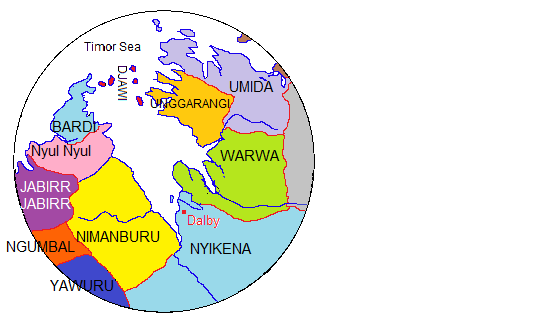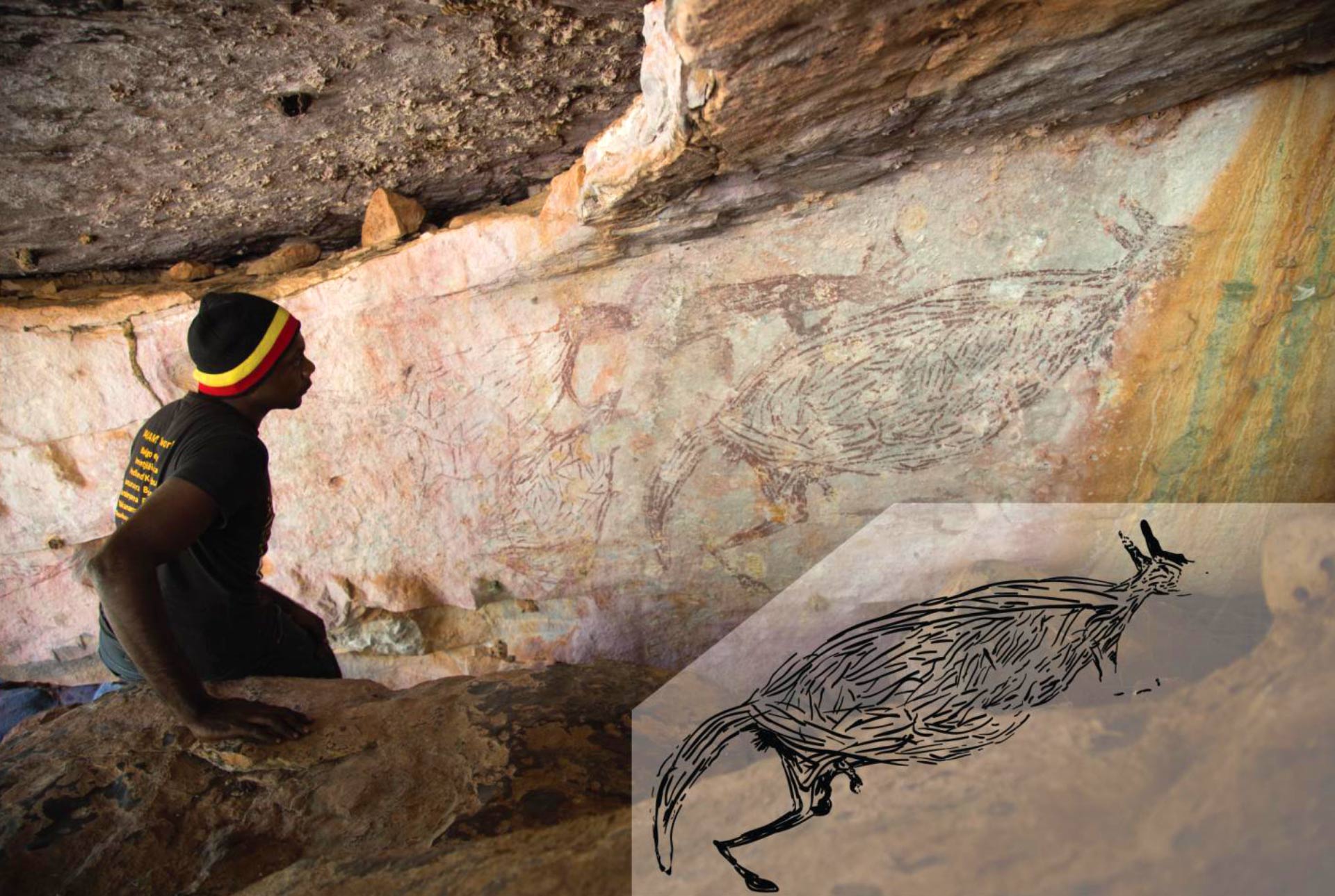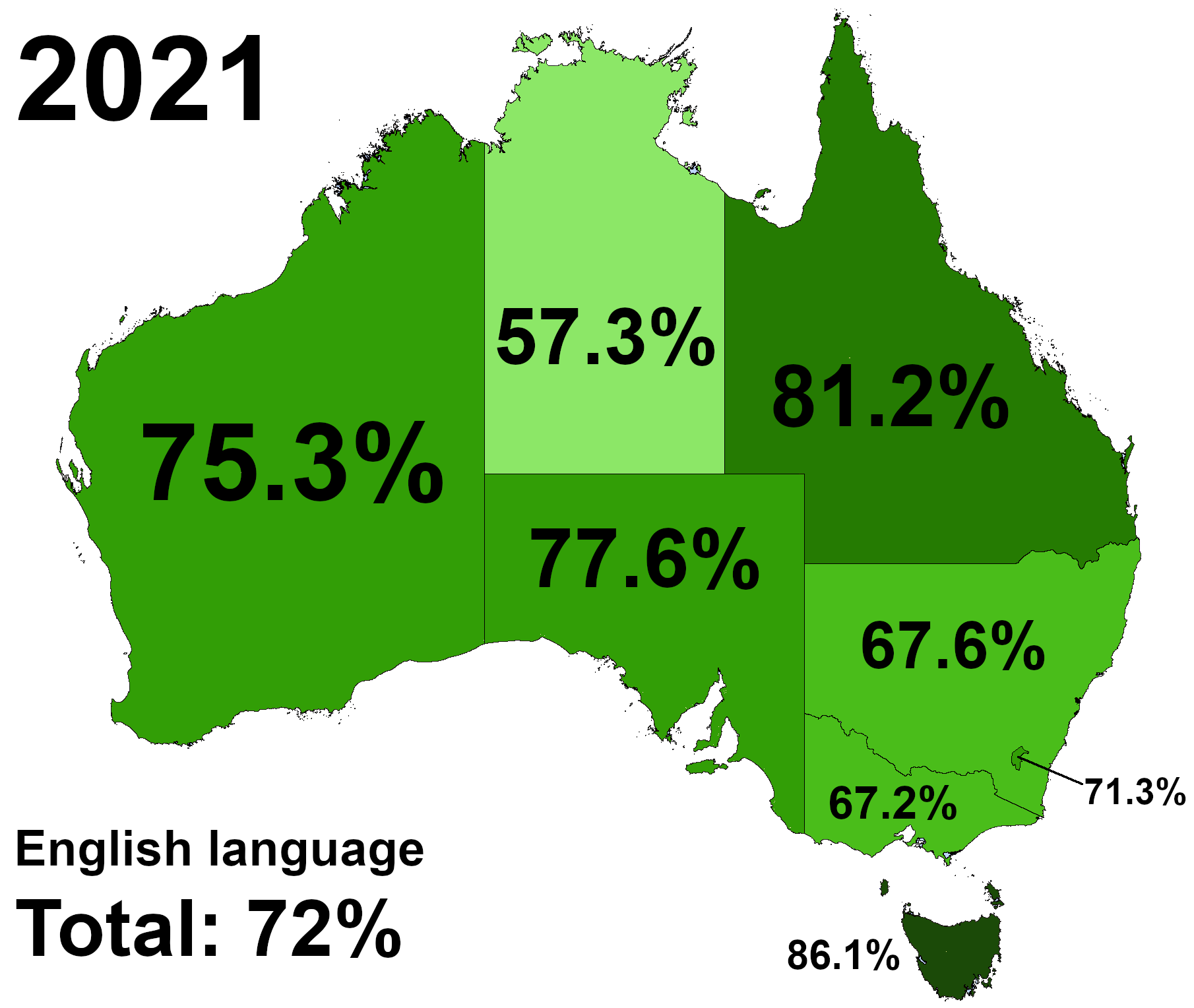|
Walmajarri
The Walmadjari (Walmajarri) people, also known as Tjiwaling and Wanaseka, are an Aboriginal Australian people of the Kimberley region of Western Australia. Name The two names reflect different Walmadjari preferences. Their western bands accept Tjiwaling as an ethnonym, as it is a designation peoples neighbouring them further west employ. The eastern bands prefer the Walmadjari autonym, or conversely, define themselves as the ''Wanaseka'', as opposed to the ''Tjiwaling'', side. Language Walmadjari belongs to the Ngumpin–Yapa branch of the Pama-Nyungan language family. Country Norman Tindale's estimation assigned the Walmadjari roughly of territory on the desert plateau south of the Fitzroy and Christmas Creek valleys and from Kunkadea (Noonkanbah), as far east as the Cummins Range. Their southern limits ran along the Canning Stock Route to ''Kardalapuru'' (Well 47). Sometime in the latter half of the 19th century, a group of Walmadjari, who are called ''Ngainan'', took o ... [...More Info...] [...Related Items...] OR: [Wikipedia] [Google] [Baidu] |
Walmajarri Language
Walmajarri (many other names; see below) is a Pama–Nyungan language spoken in the Kimberley region of Western Australia by the Walmadjari and related peoples. Walmajarri is declared a definitely endangered language by UNESCO based on their scale of Language Vitality and Endangerment. Names Names for this language break down along the three dialects: *Walmajarri, Walmatjarri, Walmatjari, Walmadjari, Walmatjiri, Walmajiri, Walmatjeri, Walmadjeri, Walmadyeri, Walmaharri, Wolmeri, Wolmera, Wulmari *Bililuna, Pililuna *Jiwarliny, Juwaliny, Tjiwaling, Tjiwarlin Speakers Communities with a Walmajarri population are: * Bayulu * Djugerari ( Cherrabun) * Junjuwa ( Fitzroy Crossing) * Looma * Kadjina (Millijidee) * Mindibungu ( Bililuna) * Mindi Rardi ( Fitzroy Crossing) * Mulan * Ngumpan * Wangkajungka ( Christmas Creek) * Yakanarra * Yungngora The Walmajarri people used to live in the Great Sandy Desert. The effects of colonialism took them to the cattle stations, t ... [...More Info...] [...Related Items...] OR: [Wikipedia] [Google] [Baidu] |
Kankawa Nagarra
Kankawa Nagarra (born circa 1943), (also known as Olive Knight) is an Aboriginal Australian blues and gospel singer-songwriter and author. She sings in Walmajarri, Kimberley Creole and English. Her 2024 album ''Wirlmarni'' won the Australian Music Prize. Early life Nagarra was born circa 1943 in Kimberley (Western Australia) She is a Gooniyandi and Walmatjarri elder. At the age of 8, Nagarra was taken from her parents and sent to a mission in the Wangkatjungka Community. She one of the Stolen Generations. Nagarra discovered gospel, country, rock and blues music whilst working on homesteads via the radio. Nagarra learned to play a cousin's guitar when she was in her 20s. She said, "At the time, there was a cultural thing, women weren't allowed to touch anything made of wood, we were forbidden to even go near the guitar, because it was a men's wooden instrument." Nagarra bought her first guitar at age 40. Performing career In March 2011, Knight released ''Gospel Blues at ... [...More Info...] [...Related Items...] OR: [Wikipedia] [Google] [Baidu] |
Walmajarri
The Walmadjari (Walmajarri) people, also known as Tjiwaling and Wanaseka, are an Aboriginal Australian people of the Kimberley region of Western Australia. Name The two names reflect different Walmadjari preferences. Their western bands accept Tjiwaling as an ethnonym, as it is a designation peoples neighbouring them further west employ. The eastern bands prefer the Walmadjari autonym, or conversely, define themselves as the ''Wanaseka'', as opposed to the ''Tjiwaling'', side. Language Walmadjari belongs to the Ngumpin–Yapa branch of the Pama-Nyungan language family. Country Norman Tindale's estimation assigned the Walmadjari roughly of territory on the desert plateau south of the Fitzroy and Christmas Creek valleys and from Kunkadea (Noonkanbah), as far east as the Cummins Range. Their southern limits ran along the Canning Stock Route to ''Kardalapuru'' (Well 47). Sometime in the latter half of the 19th century, a group of Walmadjari, who are called ''Ngainan'', took o ... [...More Info...] [...Related Items...] OR: [Wikipedia] [Google] [Baidu] |
Mangala People
The Mangarla, or Mangala, are an Aboriginal Australian people of Western Australia. The Mangarla people traditionally lived in the north-western area of the Great Sandy Desert, west of the Karajarri people, east of the Walmajarri, with the Juwaliny and Yulparija to the south. Many Mangarla people now live in Jarlmadangah and Bidyadanga. Mangarla language The Mangarla language is one of the Marrngu languages of the Pama–Nyungan family. Two dialect varieties of their tongue are attested, ''Kakutu/Kakurtu'' and ''Ngulatu/Ngulartu''. Mangarla is an endangered language, with less than 20 native speakers according to a 2002 census. The Pallottine Catholic priest Father Kevin McKelson (1926–2011), known to the 5 tribes whose languages he mastered as ''Japulu'' (father) compiled the first dictionary of the language in 1998, a work which formed the basis for a dictionary co-authored with Albert Burgman in 2005. Country Traditional Mandala territory covered approximately on the de ... [...More Info...] [...Related Items...] OR: [Wikipedia] [Google] [Baidu] |
Canning Stock Route
The Canning Stock Route is a track that runs from Halls Creek, Western Australia, Halls Creek in the Kimberley (Western Australia), Kimberley region of Western Australia to Wiluna, Western Australia, Wiluna in the Mid West (Western Australia), mid-west region. With a total distance of around 1,850 km (1,150 mi) it is claimed to be the longest historic stock route in the world. A 1928 Royal Commission into the price of beef in Western Australia led to the repair of the wells and the re-opening of the stock route. Around 20 droves took place between 1931 and 1959 when the final droving run was completed. The Canning Stock Route is now a popular but challenging four-wheel drive trek typically taking 10 to 20 days to complete. A few adventurers have traversed the track on foot, by bicycle, motorcycle and in two-wheel drive vehicles. There are two small settlements on the track where fuel and other supplies may be obtained; Kunawarritji Community, Western Australia, Kuna ... [...More Info...] [...Related Items...] OR: [Wikipedia] [Google] [Baidu] |
Ngumpin–Yapa Languages
The Ngumpin–Yapa a.k.a. Ngarrga–Ngumpin languages are a family of Pama–Nyungan languages of the Pilbara region of Australia.Bowern, Claire. 2011. How Many Languages Were Spoken in Australia?' (correcte * Ngumpin–Yapa ** Ngarrga languages (Yapa) *** Warlmanpa *** Warlpiri ** Ngumbin languages *** Walmajarri *** Djaru *** Gurindji *** Mudburra Ngardi, once classified as either Ngarrga (2002) or Ngumpin (2004), has been reassigned to the Wati languages. Vocabulary Capell Capell or Capel is a surname. Notable people with the name include: Capell * Arthur Capell, 1st Baron Capell of Hadham (1608–1649), English politician * Arthur Capell, 1st Earl of Essex (1631–1683), English statesman * Arthur Capell (1902–1 ... (1940) lists the following basic vocabulary items for the Ngumpin–Yapa languages:Capell, Arthur. 1940The Classification of Languages in North and North-West Australia ''Oceania'' 10(3): 241-272, 404-433. : References *McConvell and Laughren ... [...More Info...] [...Related Items...] OR: [Wikipedia] [Google] [Baidu] |
Nyigina
The Nyikina people (also spelt Nyigina and Nyikena, and listed as Njikena by Tindale) are an Aboriginal Australian people of the Kimberley region of Western Australia. They come from the lower Fitzroy River (which they call ''mardoowarra''). Language The Nyigina language is one of several eastern varieties of the Nyulnyulan languages, closely related to Warrwa and Yawuru. it was spoken by around 10 people. Country The Nyigina (Njikena) inhabited an area, estimated at . The area is located on the lower Fitzroy River from Yeeda upstream to Noonkanbah, on both banks. Education The Nyigina, together with the Mangala people, run the Nyikina Mangala Community School a school at Jarlmadangah in West Kimberley. The Nyigina-Mangala peoples also run another school, together with the Walmajarri, at Looma. Native title In 1998 the Nyigina people undertook legal proceedings to pursue their native title claims. One consisted of a ''Nyikina Mangala'' claim, which they shared with ... [...More Info...] [...Related Items...] OR: [Wikipedia] [Google] [Baidu] |
Kimberley (Western Australia)
The Kimberley is the northernmost of the nine regions of Western Australia. It is bordered on the west by the Indian Ocean, on the north by the Timor Sea, on the south by the Great Sandy Desert, Great Sandy and Tanami Desert, Tanami deserts in the region of the Pilbara, and on the east by the Northern Territory. The region was named in 1879 by government surveyor Alexander Forrest after Secretary of State for the Colonies John Wodehouse, 1st Earl of Kimberley. History The Kimberley was one of the earliest settled parts of Australia, with the first humans landing about 65,000 years ago. They created a complex culture that developed over thousands of years. Yam (vegetable), Yam (''Dioscorea hastifolia'') agriculture was developed, and rock art suggests that this was where some of the earliest boomerangs were invented. The worship of Wandjina deities was most common in this region, and a complex theology dealing with the transmigration of souls was part of the local people's religi ... [...More Info...] [...Related Items...] OR: [Wikipedia] [Google] [Baidu] |
Fitzroy Crossing, Western Australia
Fitzroy Crossing is a small town in the Kimberley region of Western Australia, east of Broome, Western Australia, Broome and west of Halls Creek, Western Australia, Halls Creek. It is approximately from the state capital of Perth. It is above sea level and is situated on a low rise surrounded by the vast floodplains of the Fitzroy River (Western Australia), Fitzroy River and its tributary Margaret River (Kimberley region, Western Australia), Margaret River. At the 2016 Australian census, 2016 census, the population of the Fitzroy Crossing town-site was 1,297; with a further 2,000 or so people living in up to 50 Aboriginal communities scattered throughout the Fitzroy Valley. About 80% of the Fitzroy Valley population were Indigenous Australians with a split of closer to 60/40 (indigenous/non-indigenous) in the townsite. Tourism, cattle stations and mining are the main industries in the area. History Fitzroy Crossing and the lands and valleys around it were the home for a numb ... [...More Info...] [...Related Items...] OR: [Wikipedia] [Google] [Baidu] |
Ningali Lawford
Ningali Josie Lawford (1967 – 11 August 2019), also known as Ningali Lawford-Wolf and Josie Ningali Lawford, was an Aboriginal Australian actress known for her roles in the films '' Rabbit-Proof Fence'' (2002), ''Bran Nue Dae'' (2009), and '' Last Cab to Darwin'' (2015), for which she was nominated for the AACTA Award for Best Actress in a Leading Role. Early life and education Ningali Josie Lawford was born in 1967 on Christmas Creek Station, a cattle station in Wangkatjungka, near Fitzroy Crossing in Western Australia, where her father, a stockman, and mother, a domestic, worked. She was a member of the Walmadjari (Tjiwaling) people, and of the Wangkatjunga language group. After attending Kewdale Senior High School in Perth, she spent a year in Anchorage, Alaska, on an American Field Scholarship. Lawford trained in dance at the Aboriginal Islander Dance Theatre (AIDT) in Sydney. Career After leaving AIDT, Lawford started to dance at Bangarra Dance Theatre. She lat ... [...More Info...] [...Related Items...] OR: [Wikipedia] [Google] [Baidu] |
Jimmy Pike
Jimmy Pike (1940 – 3 November 2002) was a Walmatjarri Aboriginal artist. Early life Jimmy Pike was born around 1940 east of Japingka, an important ''jila'' or permanent waterhole in the Great Sandy Desert, and grew up as a hunter-gatherer. Like many of his people he drifted north toward the river valleys and the sheep and cattle stations where food was more plentiful. Living as a fringe-dweller around Cherrabun Station, he eventually joined relatives at the station camp and worked as a stockman. He was named Jimmy Pike, after Phar Lap's jockey, by a cattle station manager. Career Pike learned to use western art materials while in Fremantle Prison. Even before he was released from prison his work was exhibited in major Australian galleries. In 1989 Pike featured in a documentary ''The Quest of Jimmy Pike''. He illustrated a book ''Jimmy and Pat meet the Queen'' with his wife Pat Lowe. Pike has collaborated on a number of other books with his wife. He held exhibitions i ... [...More Info...] [...Related Items...] OR: [Wikipedia] [Google] [Baidu] |
Australian English
Australian English (AusE, AusEng, AuE, AuEng, en-AU) is the set of variety (linguistics), varieties of the English language native to Australia. It is the country's common language and ''de facto'' national language. While Australia has no official language, English is the first language of Languages of Australia, the majority of the population, and has been entrenched as the ''de facto'' national language since the onset of History of Australia (1788–1850), British settlement, being the only language spoken in the home for 72% of Australians in 2021. It is also the main language used in compulsory education, as well as federal, state and territorial legislatures and courts. Australian English began to diverge from British English, British and Hiberno-English after the First Fleet established the Colony of New South Wales in 1788. Australian English arose from a Koiné language, dialectal melting pot created by the intermingling of early settlers who were from a variety of d ... [...More Info...] [...Related Items...] OR: [Wikipedia] [Google] [Baidu] |



